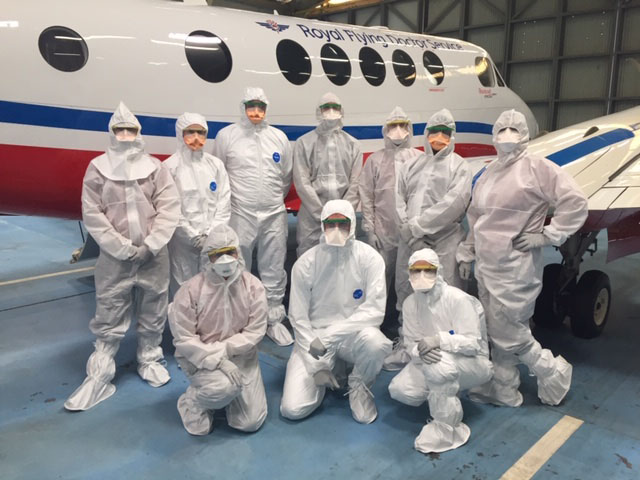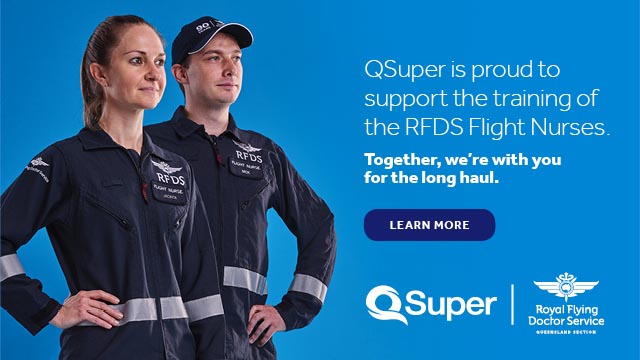RFDS flight nurses on the COVID frontline
01 June 2020
5
min read
Working on the frontline of the Royal Flying Doctor Service coronavirus response in Queensland requires a team effort and dedication to training, says RFDS Rockhampton flight nurse Nick Coleman-Hicks.

In the battle against COVID, Australian nurses and healthcare professionals have been working tirelessly to combat the virus across the entire patient-care spectrum – but what has the COVID journey looked like from the sky?
Since January, the Royal Flying Doctor Service (Queensland Section) has ensured its already highly skilled frontline staff have been given specialised training on how to respond to the evolving situation.
By investing in essential training for flight nurses, QSuper is helping to ensure the RFDS continues to provide vital emergency and primary healthcare services for Queenslanders, when they need it most.
Based in Rockhampton, Mr Coleman-Hicks is one of the dedicated RFDS flight nurses who has been responding to the impact of the coronavirus pandemic, while ensuring continuity of the vital healthcare service the RFDS provides.
“It was scary, there’s no other way of putting it really,” Mr Coleman-Hicks said.
The expectation at the beginning of the year was that we were going to be faced with a very different picture. We're fortunate that hasn't been the case; but it may change, so we need to be ready in case it does.”
Ongoing professional development and training at the RFDS is why their flight nurses are recognised as being among the most elite aeromedical specialists in the world.
Regular COVID-19 training and working together as a team has played a significant role in the Flying Doctor’s response to the virus.
Patient care is the heart of the RFDS, which is why the COVID-19 training includes best practice for transferring people with coronavirus symptoms to protect all patients. This training includes detailed processes for decontamination of the aircraft after every transfer, the donning and doffing of personal protective equipment (PPE), intubation of COVID positive patients and generally how to manage those feeling distressed or anxious about their symptoms.
Putting the PPE on and off again is really important, so we don’t do it alone. We do it one person at a time, with a buddy watching to check the PPE is put on and taken off in the correct sequence to ensure we don’t contaminate ourselves. It's just another element of teamwork in some ways,” Mr Coleman-Hicks said.
The PPE implemented includes full body coveralls, face shields with goggles, double gloving and protective booties or overshoes. On average, the RFDS (Queensland Section) has been transporting 20 to 30 patients each day in the sky wearing the specialised COVID PPE.
Despite the challenging circumstances and the broad range of remote service locations across the state, the organisation has continued to deliver vital 24-hour emergency aeromedical and essential primary healthcare to community members in need.
“People are still having heart attacks, motor vehicle accidents and the occasional DIY accident at home.” Mr Coleman-Hicks said. “For us, it's been about making sure that we continue to provide the great health service that we always have in regional and rural Australia.”
